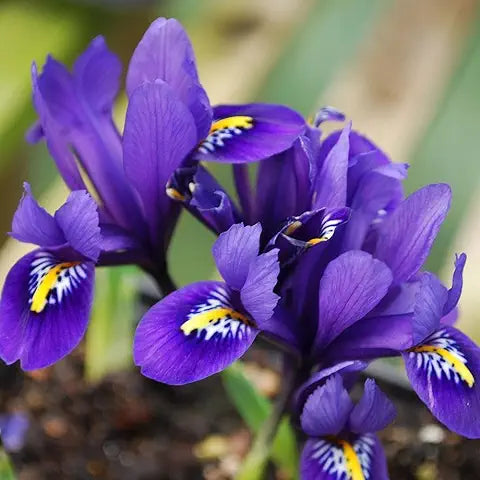Iris Flower Rare Easy Grow Plant Seeds
Couldn't load pickup availability
Description
Iris Seeds
Welcome to bijaseeds, a big, trusted name in the USA seed market with a vast, high-quality selection of non-GMO seeds and heirloom seeds. Our Iris Seeds bring a world of floral diversity to your garden with their captivating, intricate blooms. These flower seeds, ideal as seeds for planting, offer gardeners of all levels an opportunity to grow a timeless classic that thrives with elegance and resilience.
Characteristics and Uses of Iris Plants
These iris seeds yield plants varying from 8-40 inches tall, depending on the type—bearded, Siberian, or bulbous—with upright, blade-like foliage and exquisite flowers in hues of purple, blue, yellow, white, and even bi-color blends. Blooming from spring to early summer, they excel as perennial seeds, returning annually to enhance borders, rockeries, or wet areas. Their vibrant blooms attract pollinators like bees and butterflies, while also making stunning additions to fresh or dried floral arrangements.
Growing Conditions for Iris Plants
- Light Requirements: Prefers full sun (6-8 hours daily); light shade suits some Siberian varieties.
- Soil Preferences: Thrives in well-draining soil with a pH of 6.0-7.0; bearded types like drier conditions, others tolerate moisture.
- Temperature Range: Grows best in 60-75°F (15-24°C), hardy across a wide range of climates.
Planting Tips for Iris
- Timing: Sow indoors 8-weeks before the last frost or outdoors in late summer to fall for next-season blooms.
- Depth: Plant seeds ¼-½ inch deep after nicking the seed coat or soaking in warm water for 24-48 hours.
- Spacing: Space 12-2inches apart, adjusting for variety size—closer for dwarfs, wider for tall bearded types.
Watering Instructions and Tips
- Frequency: Water with 1 inch weekly during growth; reduce to occasional after blooms fade.
- Method: Water at the base to keep leaves dry, preventing rot or fungal issues.
- Tips: Ensure excellent drainage for bearded irises; Siberian types can handle wetter soils.
Growing Zones
- USDA Zones: Hardy in zones 3-10; specific varieties adapt to regional conditions within this range.
- Global Zones: Suits temperate climates worldwide, from cool northern springs to mild southern winters.
Key Benefits & Uses
- Diverse Beauty: Offers a spectrum of colors and forms for a dynamic display.
- Perennial Reliability: Returns year after year with minimal upkeep.
- Ecological Value: Supports pollinators, enriching garden biodiversity.
Best Uses in the Garden & Landscape
- Borders: Adds vertical drama and color along edges or pathways.
- Rock Gardens: Dwarf varieties bring charm to rocky or dry spots.
- Landscape Design: Creates sustainable accents near ponds or in cottage-style beds.
Conclusion
Iris Seeds from bijaseeds, a big, trusted name in the seed world, offering a wide range of high-quality, non-GMO varieties to gardeners everywhere, promise a legacy of floral splendor. Whether you choose bearded, Siberian, or bulbous types, these seeds deliver enduring beauty and versatility to your garden.
FAQ
How do I grow Iris Seeds?
Nick or soak seeds in warm water for 24-48 hours, then plant ¼-½ inch deep in well-draining soil. Start indoors 8-weeks before the last frost or sow outdoors in late summer to fall, spacing 12-2inches apart, and keep moist in sun or light shade.
When should I plant Iris Seeds?
Sow indoors in late winter (February-March) or outdoors in late summer to fall (August-October) to establish roots for spring flowering.
Are Iris Seeds difficult to grow?
No, they’re straightforward with proper preparation—light, water, and drainage—offering rewarding results for all gardeners.







